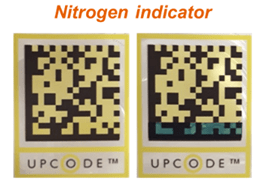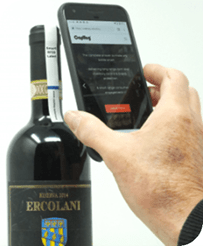The project is divided into six work components, ie. 1) Project management, 2) analysis of the smart brands on the market and their use in the food industry, 3) analysis of the needs and expectations of consumers and other stakeholders for smart brands, 4) analysis of, and proposals for, new service opportunities related to smart brands. Where 19 implementations of improved service were presented, 5) tests of selected solutions proposed in previous work components, 6) dissemination.
The activity section, which dealt with the analysis of smart tag technology and the use of smart tags in food value chains, was mostly about finding and analyzing published material on smart tags and food. The focus was on finding out which labels are most commonly used in the food sector and how much they are used. Their main advantages and disadvantages were also analyzed. Consumer confidence in the labels and the messages they contain was a key factor in the analysis. The smart tags that were discussed in this project were, for example, tags that detect temperature, freshness, gas and biomaterials, barcodes, QR codes and signals that send electronic messages (RFID). The project included a comprehensive survey of the published results of research projects and articles in professional journals on the subject. The analysis indicated that little research has been done on whether consumers trust smart brands, whether they are interested in using them or whether the use of such brands creates added value for manufacturers. The results of the analysis also indicate that there are still technical restrictions on what can be done with the labels, to meet the demands of consumers and producers. The results of this paper will be published later in a peer-reviewed scientific paper.
The task, which was to assess the expectations and needs of consumers and other stakeholders for smart brands, was comprehensive. It was based in part on the results of a previous project, but in addition interviews were conducted with manufacturers, suppliers and retailers in nine countries; so-called focus groups were held with consumers, and online surveys were held where over 4 thousand people responded. At Matís, two focus groups were held that dealt specifically with clever labeling of seafood. Matís also conducted an online survey on the same topic, which was answered by about 500 people. The results of this paper will be published later in a peer-reviewed scientific paper. Among the results is that smart brands can increase the value of food and the consumer experience, at the same time as there is a willingness to pay for consumers to pay higher prices for products with smart brands.
The project, which focused on identifying new service options that use smart tags, went into an extensive SWOT (Strengths, Weaknesses, Threats and Opportunities) analysis of smart tag technology in the food industry. In the work component, 19 methods were analyzed and the ones that were considered the most respectable were tested in the next work component. That component tested four types of pre-pilot smart brands in several food value chains. The labels tested are:
· Freshness indicator (Nitrogen Smart Tag indicator) - Since nitrogen is formed in food when it is damaged, the amount of nitrogen gives an indication of freshness. In this smart tag solution, the QR code was printed with a color that changes color when it comes in contact with a certain amount of nitrogen. Consumers can therefore scan the QR code to see the freshness of the product. However, this is a solution where the color changes when the amount of nitrogen exceeds a certain threshold and therefore the current limit of this solution is that the information obtained is only fresh or not (depending on where this threshold is set. Further development of this solution This freshness indicator was tested at Matís in Iceland, AZTI in Spain and KU Leuven in Belgium on different foods. It is therefore likely that further development and innovation of this solution will be undertaken by Matís and partners in the future.

· Temperature monitor (NFC Smart Tag Temperature logger) - a small smart tag that is pasted on the packaging to monitor the temperature. Consumers or other stakeholders in food value chains can then connect to the label via mobile phones and see the temperature trajectory. In fact, the participants in the project were of the opinion that this solution was less interesting for general consumers, but all the more important for producers, carriers, retailers and others with expertise to assess the effect of temperature on the quality and shelf life of food. The temperature monitor was tested at Matís in Iceland and VTT in Finland.

· Oxygen indicator (Oxygen Smart Tag indicator) works similarly to the freshness indicator, where it is printed with a color that changes color when it comes in contact with oxygen. This solution works well on foods that are in vacuum or aerated packaging, as the oxygen indicator then shows whether the packaging is "leaking" or not. The oxygen indicator was tested at AZTI in Spain and KU Leuven in Belgium.

· Tap mark (e. 'Wine Cap 'Tag) are labels attached to the cork of a wine bottle. They emit electronic signals that smartphones can receive and thus receive various information about the bottle, such as where the wine was grown, quality tests and information about pairing with food. The label also has a built-in thermometer that lets you know when the wine is at the right temperature for consumption. This label was tested by the University of Reading.

The Smart Brand project was defined as a dissemination project, where the main goal was to gather and share knowledge about smart brands. It is safe to say that these goals have been achieved, as about 6,500 people had directly contributed to the project through interviews, focus groups and consumer surveys, in addition to which over 60 thousand people have visited websites with information from the project.
Although this project is now complete, it is clear that further research and innovation will take place in this area. The participants in the project are therefore grateful to have had the opportunity to work on this very exciting project and will no doubt continue that work.



